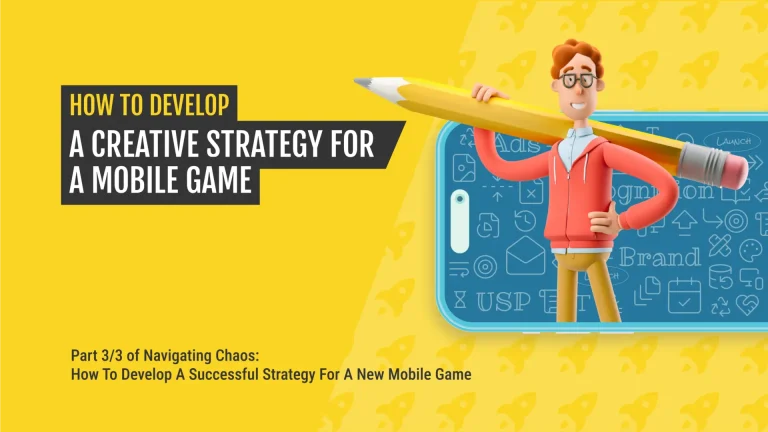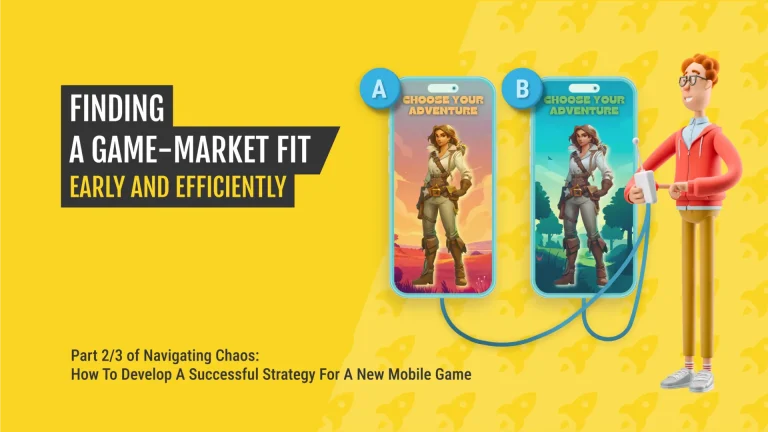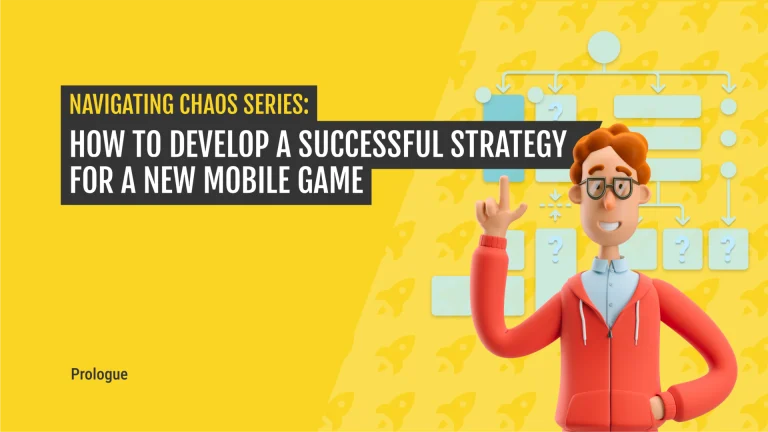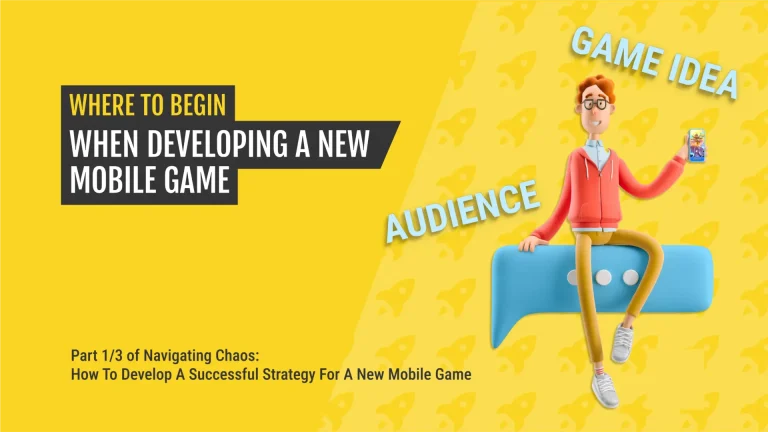
In Czech we have a nice proverb: “Everyone is a General after the battle.” What that means is that, in retrospect, you can see many mistakes that have been made, and spot many opportunities to learn.
When beginning to plan for the release of a mobile game, most developers think about the product itself rather than pitfalls of organising the soft launch, but that process is essential to understanding the risks involved and avoiding them. Even the most experienced mobile developer is not immune to making mistakes during this important period. To help you avoid some of the most common, we’ve picked ten mistakes we have seen – or even made ourselves.
1. Deciding when to start
The obvious question is when to begin the soft launch. Most developers wait too long by adding new features, levels or social connectivity only to find out that players don’t enjoy the core game loop or have significant trouble with passing the onboarding.
“A two month timescale is achievable if you have an almost perfect game and need only a few changes in balancing and monetisation to roll it out.”
Our advice is to focus on the first 15 to 20 minutes of the gameplay. That’s enough to understand the first-time user-experience and Day 1 retention. For casual games this could mean having just the first 10 levels, for a racing game having one car or two tracks. Keep in mind it’s just a test with the goal to save money and understand the main metrics.
Don’t misunderstand this advice and release an unfinished, ugly or buggy product. The impression you want from your players is that of a good movie, where you focus on the story and don’t see that the set is just a studio mockup.
2. Missing goals and processes
A soft launch works on a typical lean startup methodology, embodying the “build – measure – learn” principle. Set clear goals such as D ay 1, Day 3, Day 7 retention, ARPU and percentage of payers, and adjust metrics to the location where you soft launch (e.g. ARPU will be different in Hong Kong and Turkmenistan).
The team has to be prepared for huge amounts of work being generated by the soft launch. Define processes that will collect and analyse data, decide how you will evaluate your learnings, and reserve capacities of UI designers, graphic designers, programmers, etc. Set reasonable time frames (e.g. 2 weeks) for each sprint and focus only on the metric that should be improved.
3. Unrealistic timing expectations
Many teams expect a soft launch to be as short as two months. If Wooga’s Jelly Splash or Supercell’s Clash Royale made it to a global launch, why not? The thing is, these studios heavily tested the game in-house or with specialised player research agencies, so their starting position may be different to yours.
A two month timescale is achievable if you have an almost perfect game and need only a few changes in balancing and monetisation to roll it out. Otherwise expect it to be rather closer to 4 to 6 months, if not more.
4. Platforms and devices
To save money for soft launch never go for iPad as the device you optimise for first. The difference in cost per install between an Android phone could be more than 5x. Another issue is the addressable market of iPad players in several smaller countries.
The ideal scenario is to have the game or app ready for Android phones first, with progression to iPhone and iPad at a later stage.
“Be ready to kill the game if it’s not performing well. You should remember Supercell here, and copy the same critical approach”
5. Where to soft launch
One strategy for picking countries is to follow your competitors, but you will very likely miss the reason why they launch in certain countries and what metrics they measured to decide. Do your own research based on the size of the market, expected CPI, language, preferred game genres and competition.
6. Initial targeting
One of the most common mistakes is a vague definition of your target group. It’s not marketing bull to have clear personas in mind, because once a UA manager starts setting up a first campaign these questions become very important.
Have a very specific definition of your player: gender, age, location, interests, favourite personalities, game genres, and particular games, both mobile and desktop. I particularly like this way of creating gaming profiles by Facebook IQ. It is a good foundation for campaign managers to start experimenting with targeting and learn with whom the game resonates the best.
7. Correct tracking
It’s like a stuck vinyl record; over and over again we ran into the same issues with poor analytics setups and missing attribution tools. Proper data collection often takes weeks to fix, and it can delay the real start of the soft launch.
Select the right mobile analytics tool, set the most important tracking points, and integrate attribution tools and payments receipts verification. Test all of these with real traffic, not just in a sandbox or with few in-house testers.
8. Wasting budget
Running a soft launch for several months and acquiring players can become expensive, but many studios still spend more than necessary – the low end is between $5,000 and $10,000 to get meaningful data. They want to acquire more players just to see if poor performance will improve with a larger sample. They insist on proceeding to expensive markets before all of the holes are filled, like retention and obvious UI issues.
Be disciplined in progressing step-by-step, and don’t add features deep in the game when the basics aren’t working yet. Trust your numbers (but double check them!) and be 100% honest with yourself and your team. Also, be ready to kill the game if it’s not performing well. You should remember Supercell here, and copy the same critical approach.
“App stores are super-crowded shopping malls, your new game is hidden on the lowest shelf, and it is a size of a matchbox”
9. Silent launch expectations
We’ve seen attempts to generate organic traffic by making games available in more countries without any support. The reasoning is that “People will come,” but the truth is they usually won’t. App stores are super-crowded shopping malls, your new game is hidden on the lowest shelf, and it is a size of a matchbox.
Pick somewhere between three to eight markets where you will actively run user acquisition. Don’t lower your chances of getting featured by making the game available across half of the globe and hoping for a traffic miracle.
10. Deciding when and where to launch globally
By finding the optimised CPI for a large enough segment (e.g. pool players in the UK acquired by Facebook using interests targeting) you will get a baseline for the absolute minimum lifetime value your game needs to deliver. Once the game shows an ability to deliver that LTV you’re getting close to a global launch. You should also decide where you will support the game, as very few publishers have the budget to drive paid acquisition worldwide. You need 6 weeks for Apple and Google featuring consideration, and about 3 weeks to reach the press with the final build prior the global launch.
BONUS: Test your marketing as well!
Don’t forget, soft launch is an important opportunity for testing marketing. Experiment with targeting, multiple messaging, various creatives, and try several ad networks. Optimise store listing to improve conversion, and prepare lookalike audiences that could be used for the global launch.




